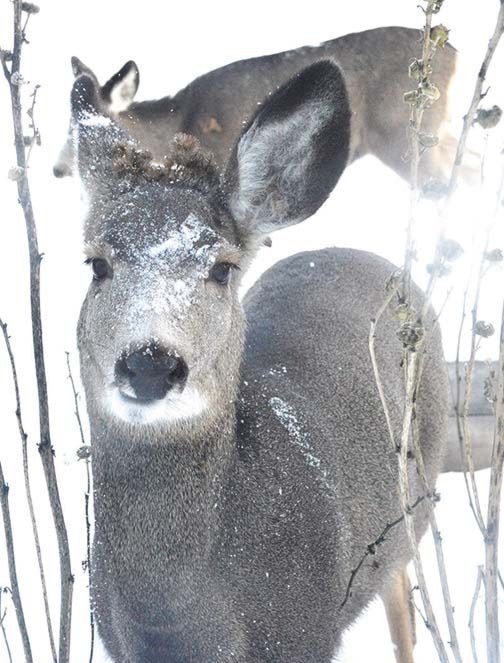With Animal Alliance decrying an apparent deer cull and the City of Cranbrook refusing to comment on the situation, a company conducting an upcoming urban deer translocation trial says the project is on pace to begin in mid-February.
A letter released by Ian Adams, the senior wildlife biologist with the translocation trial, clarifies that his company—VAST Resources—had nothing to do with the recent deer cull in Cranbrook.
"Any culling activity this winter is entirely peripheral to the translocation project…" wrote Adams.
With the recent deer cull becoming public knowledge, Animal Alliance—one of the funding partners—threatened to pull their funding support for the project, which Adams says is not entirely true.
Adams says Animal Alliance has already contributed $10,000 to VAST Resources, which was used to purchase 10 GPS radio collars at a cost of just over $1,000 each that will be collared on deer captured in Kimberley and Elkford.
Adams says that roughly 90 per cent of the cost for radio collars for deer captured in Cranbrook and Invermere have been covered with direct funding from the B.C. Ministry of Forests, Lands and Natural Resource Operations. The remaining funding shortfall will be covered by the same two municipalities.
Adams states that the translocation project has three primary objectives, which include:
• Determining the mortality rate and causes of mortality during each stage of the translocation process—capture, handling, transport and post-release. Adams notes he expects no mortality during capture, handling and transport, but expects post-release mortality rates to be similar to those documented for non-urban mule deer that are collared in the region.
• Documenting distance travelled over time of radio-collared translocated urban mule deer. Adams expects translocated deer do not return to home community or any other urban area.
•Determining home ranges of radio-collared translocated urban deer. Adams expects home ranges to be similar to those documented for non-urban mule deer also collared in the region.
Adams says the VAST Resources is purposely avoiding providing the public with knowledge of exact capture dates in order to reduce likelihood of public viewing of the work. He adds that the intent is to reduce stress levels on the deer as much as possible.
A total of 20 adult does will be fitted with the GPS radio-collars that will provide two locations per day after their release as well as notification if the collar doesn't move for eight hours, which is an indicator of mortality.
Capture methods include two methods—tranquilizing deer with a dart gun operated by trained biologists and veterinarians by drawing deer to bait stations on municipal lands.
The second method involves using clover traps on private land with permission of the landowners. Adams clarifies that the clover traps are different than the ones used for the culls, as the ones being used for the project are lighter and do not collapse once the animal is inside.
Those clover traps have been successfully used for wildlife capture under approved Animal Care guidelines in non-urban settings for deer and bighorn sheep.
Only adult females and young fawns will be moved; any bucks captured in clover traps will be released on site without any handling.
Cranbrook City Council has a regular scheduled meeting on Monday, Jan. 18. Whether council publicly addresses the deer cull remains to be seen. The B.C. Deer Protection Society is planning a protest at City Hall before the meeting.
